
The Republican Guard is part of the French National Gendarmerie. It is responsible for special security duties in the Paris area and for providing guards of honour at official ceremonies of the French Republic.

A gendarmerie is a military force with law enforcement duties among the civilian population. The term gendarme is derived from the medieval French expression gens d'armes, which translates to "men-at-arms". In France and some Francophone nations, the gendarmerie is a branch of the armed forces that is responsible for internal security in parts of the territory, with additional duties as military police for the armed forces. It was introduced to several other Western European countries during the Napoleonic conquests. In the mid-twentieth century, a number of former French mandates and colonial possessions adopted a gendarmerie after independence. A similar concept exists in Eastern Europe in the form of internal troops, which are present in many countries of the former Soviet Union and its former allied countries.

The Compagnies républicaines de sécurité, abbreviated CRS, are the general reserve of the French National Police. They are primarily involved in general security missions, but the task for which they are best known is crowd and riot control. The DCCRS has seven units: in Paris, Lille, Rennes, Bordeaux, Marseille, Lyon and Metz.
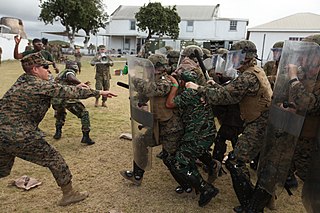
Riot control measures are used by law enforcement, military, paramilitary or security forces to control, disperse, and arrest people who are involved in a riot, unlawful demonstration or unlawful protest.

The GIGN is the elite police tactical unit of the National Gendarmerie of France. Among its missions are counterterrorism, hostage rescue, surveillance of national threats, protection of government officials, critical site protection, and targeting organized crime.
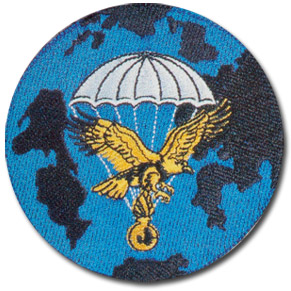
The Parachute Intervention Squadron of the National Gendarmerie was a parachute-trained tactical unit of the French Gendarmerie. The squadron was formed in 1984 with personnel from EPGM, a one-of-a-kind parachute squadron that had been created within the mobile gendarmerie in 1971 and was disestablished at that date. EPIGN, was based in Versailles-Satory with its sister unit GIGN. Besides its primary mission of providing heavy support and reinforcement to GIGN, EPIGN soon developed its own set of missions in the fields of protection and observation. It was finally absorbed, together with the "old" GIGN, into the newly reorganized GIGN in September 2007.

Law enforcement in France is centralized at the national level. Recently, legislation has allowed local governments to hire their own police officers which are called the police municipale.
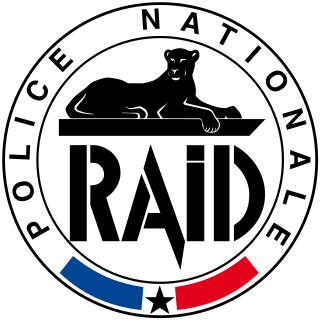
Recherche, Assistance, Intervention, Dissuasion, commonly abbreviated RAID, is an elite tactical unit of the French National Police. Founded in 1985, it is headquartered in Bièvres, Essonne, approximately 20 kilometres southwest of Paris. RAID is the National Police counterpart of the National Gendarmerie's GIGN. Both units share responsibility for the French territory.

The Maritime Gendarmerie is a component of the French National Gendarmerie under operational control of the chief of staff of the French Navy. It employs 1,157 personnel and operates around thirty patrol boats and high-speed motorboats distributed on the littoral waterways of France. Like their land-based colleagues the Gendarmes Maritime are military personnel carry out policing operations in addition to their primary role as a coast guard service. They also carry out provost duties within the French Navy.

The National Gendarmerie is one of two national law enforcement forces of France, along with the National Police. The Gendarmerie is a branch of the French Armed Forces placed under the jurisdiction of the Ministry of the Interior, with additional duties from the Ministry of Armed Forces. Its responsibilities include policing smaller towns, suburbs and rural areas, crowd and riot control, criminal investigation, including cybercrime. By contrast, the National Police is a civilian law enforcement agency that is in charge of policing cities and larger towns. Because of its military status, the Gendarmerie also fulfills a range of military and defence missions. The Gendarmerie has a strength of around 102,269 people.

The Departmental Gendarmerie is the territorial police branch of the French National Gendarmerie. The Departmental Gendarmerie has regular contact with the population and conducts local policing functions throughout the French territory.

The Air Transport Gendarmerie (GTA) is a branch of the French Gendarmerie placed under the dual supervision of the Gendarmerie and the Directorate General for Civil Aviation of the Transportation Ministry.

The National Defence Medal is a French military decoration. It was created by Charles Hernu, Minister of Defence and established by decree on 21 April 1982. It rewards particularly honourable service rendered by military personnel for their participation in operational activities. The medal has three levels: Gold, Silver and Bronze.
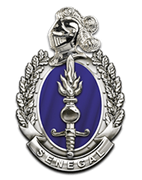
The National Gendarmerie is one of two national law enforcement force of Senegal, serving as a branch of the Armed Forces of Senegal. As a military unit, it is placed under the jurisdiction of the Ministry of Armed Forces. It is similar in nature to their French counterparts as well as the State Police in the U.S. It is one of the largest African contributors to peacekeeping missions around the world.
The Gendarmerie nationale Togolaise is a branch of the Togolese Armed Forces. Its 2,710 gendarmes protect people and property in rural areas, control roads and communications and contribute to provide assistance to the population in emergencies.
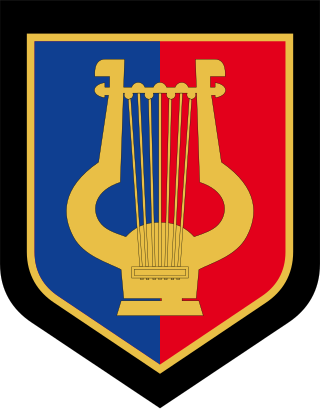
The Republican Guard Band is a military band unit of the French Republican Guard, which is part of the National Gendarmerie. The band is composed of 120 professional musicians from national conservatories. As the senior band and field music unit of the French Armed Forces, it is aimed towards active participation as the musical accompaniment in all national events.

Arnaud Jean-Georges Beltrame was a lieutenant colonel in the French Gendarmerie nationale and deputy commander of the Departmental Gendarmerie's Aude unit, who was murdered by an Islamic terrorist at Trèbes after having exchanged himself for a hostage. French President Emmanuel Macron said that Beltrame deserved "the respect and admiration of the whole nation." A state funeral was held at Les Invalides, Paris; for his bravery and adherence to duty he was posthumously promoted to the rank of colonel and made a Commander of the Legion of Honour.

The National Gendarmerie of Gabon is the national police force of Gabon responsible for law enforcement in Gabon. It is under the direct command of the President of Gabon. The Gendarmerie is also in charge of the Gabonese Republican Guard.

The security and intervention sections are specialized units belonging to the Algerian National Gendarmerie.
The Guard was a military force in Vichy France, created from the Mobile Republican Guard after it was dissolved in November 1940. It is now the modern Mobile Gendarmerie.

































